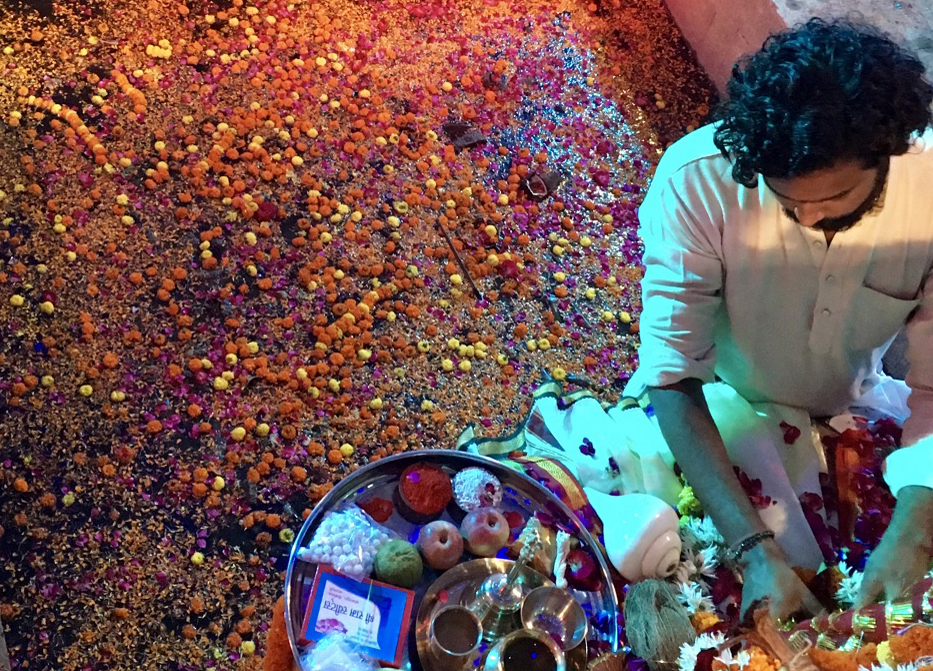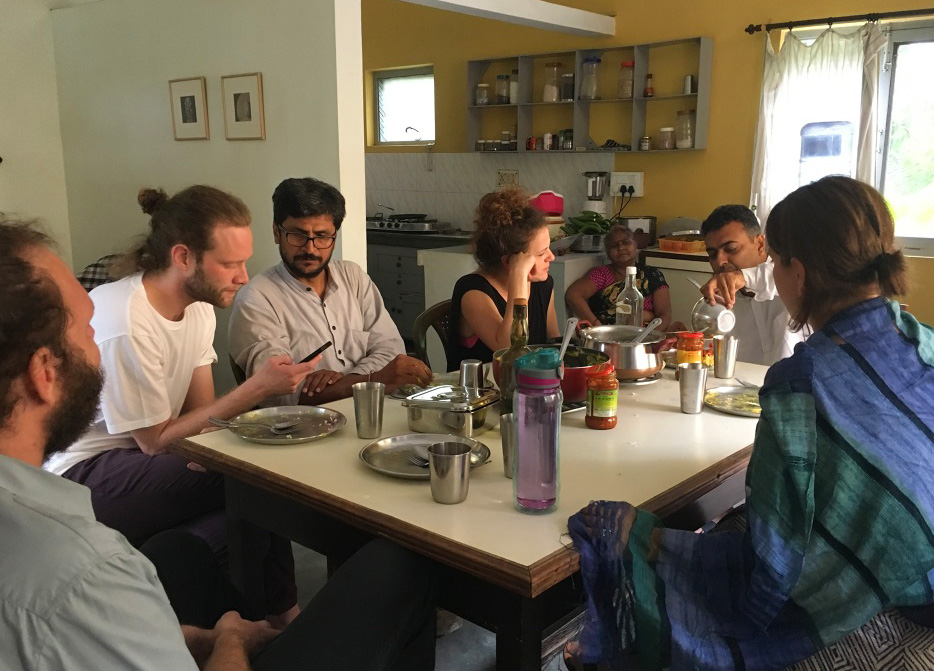What appealed to you about doing this residency?
I first travelled to India in 2015, visiting Kerala, Rajasthan, Delhi and Agra in Utter Pradesh. Varanasi was definitely on my radar, but time and distance meant it was on the ‘next time’ list.
Being awarded the three-month residency was an amazing chance to really immerse myself in India and especially exciting to me - it was in the holy city of Varanasi, which is known as much for being challenging as it is wondrous.
As a sculptor, I was interested in how I could work with local artisans and suppliers and potentially work some of the wonder of Varanasi into a new project, which I see being a fusion of New Zealand modernism and Indian handcraft.
Can you describe the work you're doing in Varanasi?
Much of my most recent work has looked at modernist art and design, particularly the role and influence of sculptural objects.

Natalie Guy: "The contrast between traditionally handmade now in India/50s modernism in New Zealand, and hard-edged/ephemeral is what I intend the finished works to explore."
I work across various media including found object, bronze, glass and wood, making works that are a homage of sorts to the loaded symbolism that accompanies modernity. It has been commented that my material choices appear to dematerialise the memory of the original but not its legacy.
For the project at Kriti Gallery, I needed to find a material that was available and transportable.
I focused on muslin as Varanasi is known for its production, originally used for shrouds. I wanted to use this as a base for embroidery by local craftspeople, based on Gordon Walters prints from the 50s.
I have referenced Gordon Walters before in a series of facsimile brass air vents for the Wallace Homestead. Here, the project was for an upcoming exhibition Then and Then again at the Malcolm Smith Gallery.
My intention was to create pairs of banners with part of a design on each, the transparent nature of the fabric means that even white embroidery is read as a shadow, referencing the often dark/light designs of the Gordon Walters prints.
That I could get large simple, shapes of embroidery in a specifically flat stitch done by hand was a delight of the residency. These banners are hung with iron works that also reference the prints each using one of four motifs.
The contrast between traditionally handmade now in India/50s modernism in New Zealand, and hard-edged/ephemeral is what I intend the finished works to explore.
Can you describe the residency - what's it like living and working there?
Kriti Gallery, which is the only contemporary gallery in Varanasi, was established in 2006 by Navneet Ramen with Petra Manefeld joining him in 2008. Alongside the gallery is purpose built accommodation in a modernist-meets-India style that accommodates up to five visiting artists.

Kriti Gallery opened in 2006 and can house up to five artists at any one time
Varanasi in 2017 still feels extremely traditional, especially when compared to cities like Delhi or Kochin. Local inhabitants are proud of this adherence to tradition and it is enthusiastically acknowledged that every festival is celebrated here, many over several days or weeks.
This traditional ethos extends to clothing and adherence to Hindi principals and observance. The local streets are very dusty, potholed (or totally unpaved) and very noisy with honking and smell of a mixture of cow dung, rubbish and exhaust fumes (while stuck in traffic).
Varanasi, or Benares as it is traditionally known, is famous for the Ghats (steps) that line the Ganges river. For over 2500 years, this city has had a special place in Indian Hindu religious culture attracting pilgrims and seekers from all over India.
It is said Shiva makes Benares his permanent earthly home. Bathing in the Ganges, a river said to have fallen from heaven to earth in Benares, is a rite for locals and pilgrims to receive divine blessing. The dying also come to bathe and to die in Benares as death here is eternal Liberation.
Dawn is the most special time to walk the more than eighty ghats that line a 7km stretch of the old city waterfront, and a pleasure that I observed often.
Why you think residencies like this are important?
Residencies such as this are such a rare chance to immerse yourself in a place for a length of time, and for me it was a chance to concentrate on a specific project made in a specific place. Varanasi is endlessly fascinating, with so much more to explore, I felt I had just started to get comfortable with knowing my around and doing business there.


